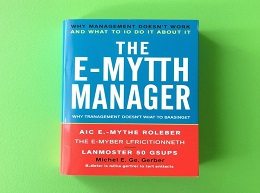The Entrepreneur's Guide to Customer Development: A Cheat Sheet to The Four Steps to the Epiphany

The Entrepreneur's Guide to Customer Development: A Cheat Sheet to The Four Steps to the Epiphany - A Comprehensive Review
In the world of startups and entrepreneurship, understanding your customers is paramount to achieving success. "The Entrepreneur's Guide to Customer Development: A Cheat Sheet to The Four Steps to the Epiphany" by Brant Cooper and Patrick Vlaskovits provides an invaluable framework for navigating this critical aspect of business development. This guide serves as an abridged companion to Steve Blank's seminal work, "The Four Steps to the Epiphany," distilling its core principles into actionable steps for entrepreneurs.
Customer Development
Customer development is a rigorous, scientific approach to building a successful business, emphasizing the importance of validating ideas and learning from customers at every stage. Unlike traditional product development, which often focuses on the product itself, customer development prioritizes understanding and solving customer problems.
The Four Steps to the Epiphany
The guide is structured around four key steps: Customer Discovery, Customer Validation, Customer Creation, and Company Building. Each step represents a phase in the journey from idea to sustainable business, with specific goals and actions.
1. Customer Discovery: Finding the Problem-Solution Fit
Customer Discovery is about understanding your target market and their problems. The goal is to test your hypotheses about the problem your product solves and who your customers are.
Example: Dropbox
Dropbox's founder, Drew Houston, initially created a video demonstrating how the product worked and shared it on forums frequented by potential users. The overwhelming positive feedback confirmed that people had a problem with managing files across devices and that Dropbox's solution resonated with them. This early validation helped shape Dropbox's development path.
Practical Steps:
- Conduct interviews with potential customers to gather insights about their pain points.
- Create a Minimum Viable Product (MVP) to test your assumptions.
- Use surveys and feedback forms to gather quantitative data.
2. Customer Validation: Building a Repeatable Sales Model
Customer Validation is the process of ensuring that your product not only solves a problem but that customers are willing to pay for it. This step focuses on developing a scalable and repeatable sales process.
Example: Zappos
Before launching the full e-commerce site, Zappos founder Nick Swinmurn tested the idea by taking pictures of shoes at local stores and listing them online. When orders came in, he would purchase the shoes and ship them directly to the customers. This validated that people were willing to buy shoes online, justifying the investment in a full-fledged website.
Practical Steps:
- Develop a sales roadmap and define your sales process.
- Identify early adopters who are passionate about your product.
- Measure key metrics such as customer acquisition cost (CAC) and lifetime value (LTV).
3. Customer Creation: Driving Demand
Once your product is validated and you have a repeatable sales model, the next step is Customer Creation. This phase involves creating and driving customer demand through marketing and sales efforts.
Example: HubSpot
HubSpot utilized inbound marketing to attract customers by providing valuable content through blogs, webinars, and whitepapers. This strategy not only created demand but also established HubSpot as an authority in the field of marketing automation.
Practical Steps:
- Develop a comprehensive marketing strategy that includes content marketing, social media, and paid advertising.
- Focus on building a strong brand and online presence.
- Implement tracking tools to monitor the effectiveness of your marketing campaigns.
4. Company Building: Scaling the Business
The final step, Company Building, involves transitioning from a startup to a scalable enterprise. This requires building the infrastructure and processes necessary to support growth.
Example: Airbnb
Airbnb focused on scaling its operations by standardizing processes and expanding its team. They invested heavily in customer support and community management to handle the increasing number of users and listings. This structured approach enabled Airbnb to manage rapid growth effectively.
Practical Steps:
- Develop organizational structures and define roles and responsibilities.
- Invest in training and development for your team.
- Implement scalable systems and processes to manage operations efficiently.
Real-World Applications and Success Stories
To further illustrate the effectiveness of the customer development process, let’s delve into some additional real-world examples that highlight the transformative impact of these principles.
Slack: Listening to User Feedback
Slack's success can be attributed to its relentless focus on customer feedback during its early stages. By continually iterating based on user input, Slack was able to refine its product to meet the needs of its users better. This customer-centric approach helped Slack grow into a ubiquitous tool for workplace communication.
Tesla: Validating Market Demand
Tesla’s approach to validating market demand before fully committing to production is a prime example of effective customer development. By taking pre-orders for the Model 3, Tesla was able to gauge demand and secure funding to scale production, minimizing the financial risk associated with launching a new vehicle.
The Value of a Customer-Centric Approach
"The Entrepreneur's Guide to Customer Development" emphasizes the importance of understanding and validating customer needs before scaling a business. This approach reduces the risk of failure and increases the chances of building a product that truly resonates with the market.
For entrepreneurs, this guide serves as a practical toolkit for navigating the complex journey from idea to sustainable business. By following the four steps Customer Discovery, Customer Validation, Customer Creation, and Company Building entrepreneurs can systematically de-risk their ventures and build products that customers love.
Final Thoughts: Implementing Customer Development
To implement the customer development model effectively:
- Stay flexible and be ready to pivot based on customer feedback.
- Keep your assumptions in check and rely on data-driven decisions.
- Engage with your customers regularly to stay attuned to their evolving needs.
By integrating these principles into your startup's DNA, you can create a strong foundation for success. "The Entrepreneur's Guide to Customer Development" provides a concise yet comprehensive roadmap to help you achieve this, ensuring that your entrepreneurial journey is both strategic and customer-centric.













